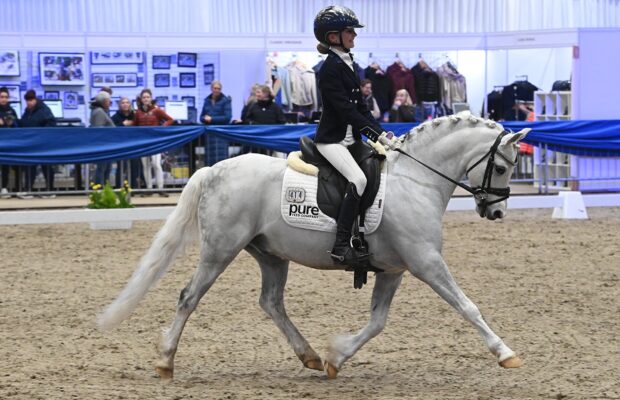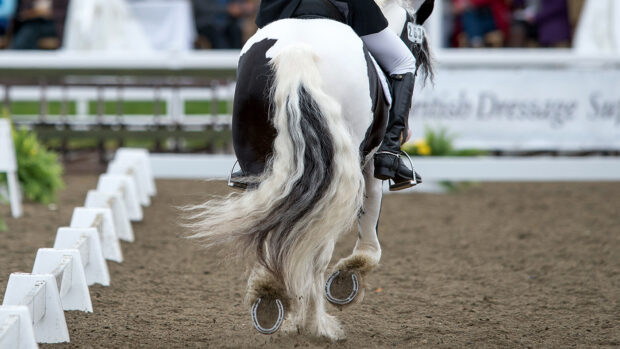It’s not uncommon to find mirrors in the arenas of most professional riders, so what do they find useful about them?
The benefits of arena mirrors
“Arena mirrors give you instant visual feedback that not even a trainer can give you,” says Paralympic dressage rider Sophie Wells. “You can see it and feel it at the same time which is really important during training.”
Dressage rider and owner of Centaur Biomechanics Russell Guire is also a big advocate of mirrors not only for his own riding, but when training clients too.
“They are an invaluable training aid to not only view your ridden performance, but also to evaluate your position,” he says.
“The Visualise training jackets that we wear have lines drawn on, and with the mirrors, you can immediately see any positional weaknesses which can have a direct impact on the horse. Mirrors make you more aware of what you are doing and help to develop your feel.”
Showjumper Ellen Whitaker also sees the benefits of arena mirrors.
“From a training point of view, when you are trying to show someone something, it’s useful getting them to look in the mirror and see what you are describing, such as their leg position, or how the horse is moving,” she says.
What exercises are they most useful for?
“I find them useful when I’m teaching flying changes, because you can check the alignment of the horse and make sure they aren’t crooked,” says Sophie. “Also, for movements such as the half-pass when the positioning of the horse is vital. Sometimes you can’t feel what is going on, but by being able to see it, you can then correct it in your mind and learn what it should feel like.”
Russell uses arena mirrors for lateral work and when he is working with clients from a rider biomechanics point of view.
“When I’m training, I get my clients to look at themselves in the mirrors to assess their own position, and check the side view of how the horse is going,” he says. “Checking the horse’s way of going, how the exercise is being executed and the rider’s position are key, especially when riding down the centre line and for lateral work.”
Ellen uses the mirrors to check the horse’s development.
“I use them a lot with a horse who is weak behind,” she says. “The mirrors help me to see how they are using their hind end and check that they are working correctly.”
The cons
“Sometimes you can get a little reliant on mirrors, so I make sure I always do movements towards the mirror and away from them so that I can try and log it in my mind,” says Sophie.
“That’s really important because, when you are competing, there aren’t mirrors to rely on in the arena. When you don’t log how that feels, that’s when you’re in trouble.”




